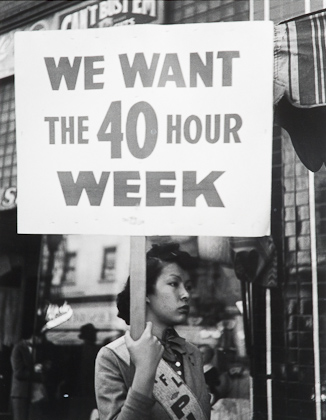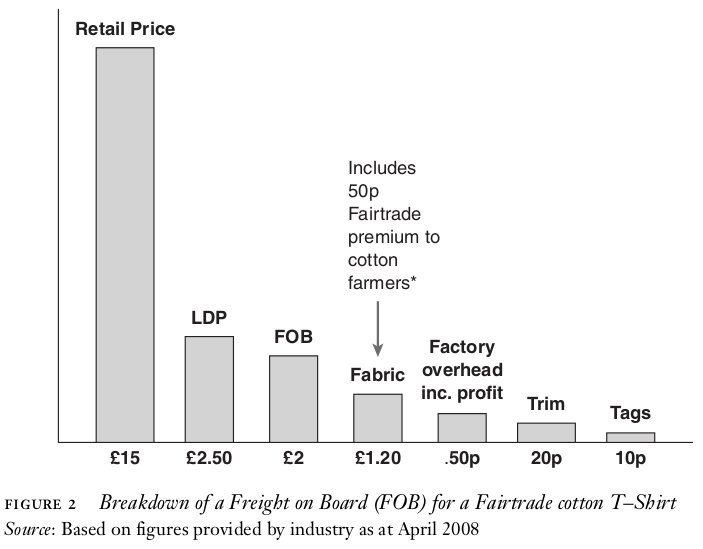
What of all that are buyers aware of, and how do they use it?
This is the second of the two questions for which the most insightful research with fairly hard data has been published by Prof. Doug Miller from Northumbria University in Newcastle. The two most relevant papers in this context are: ‘What price a living wage‘ and ‘Towards Sustainable Labour Costing in the Global Apparel Industry‘
The situation of the buyer end of the value chain:
Historically, labour cost in garment manufacture has been determined by multiplying
– the estimated amount of time taken to complete a garment
– by either an individual, or a group of workers by the actual labour cost which is either the minimum wage or the prevailing wage (minimum wage plus additional wage elements existing at the factory in question) expressed as a minute value.
Payment systems would either be based on remuneration by the ‘piece’ or on the basis of ‘time saved’. Both of these systems are based on the concept of a ‘standard time‘ per piece when manufactured.
With the off shoring of manufacturing, these variables – although still important in the engineering context – became less relevant, even without meaning to buyers. They instead shifted to consider the costs which make up the Freight on Board (FOB) or ‘ex factory’ price: fabric, trim, packaging and the manufacturing.
These costs are also referred to as as CM (cut make) or CMT (cut make and trim) cost.

This development is in as far an irony because the remainder of the value chain is where – by factor of multiplication – the most value is being created as the graphic on the right from the above mentioned papers shows.
In the present, CMT is the only area where a buyer will be negotiating with a manufacturer (see also previous post).
The above papers report the following quote by General Secretary of the Garment Manufacturers of Cambodia (GMAC):
“The buyers nowadays come to us with the specifications of the garments they want produced…….what generally happens is that the factories are given a CMT price as a lump sum value and the factories are left to manage it as they like. In this case, there is some haggling and negotiations about providing a longer standard time in order to get a higher CMT price. In most cases however, there is just a negotiation to obtain a higher CMT price without much reference to the standard times. … We are left to manage our own costs and the buyers generally adopt a take it or leave it attitude when it comes to the price they provide to us.”
Buyers do this hence typically based on historic data, meaning if a shirt X was made 2 seasons ago at a cost of $2, they will request it to be made for for an upcoming season for $1.9. There is no particular value or price assessment going into this, other than ‘it has to be cheaper than before’.
The CMT price is therefore not normally broken down into labour costs, materials, factory overhead, factory margin etc. This invariably means that a buyer at a European retailer will have absolutely no idea of how garments and their production are really costed, and the balance between labour and e.g. material costs contained therein.
Conclusion
In brief, buyer and supplier only talk about ‘cost’ as a lumb sum, but never about its different components, and therefore not ever of the cost of the manual labour involved in making a garment. In this equation then, normally the fabric takes up the biggest relevance – after all the buyer can influence its quality directly – and labour falls under the table because in essence it is considered ‘factory overheads’.
As we have seen in the previous post, knowing though about the break down, and possibly more importantly about how efficient factories operates is where the opportunities for buyers lie.
For 2 reasons a) to understand where they can leverage their current network of suppliers, and b) to integrate living wages into how their suppliers’ workers are paid, without breaking any budget constraints pre-given by the brands.
It’s possible, but it certainly is hard work.
The question that remains is: Too hard to be realistic?

